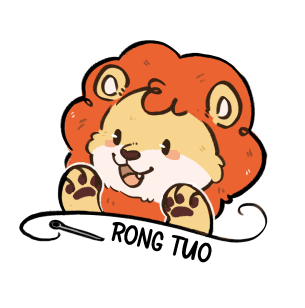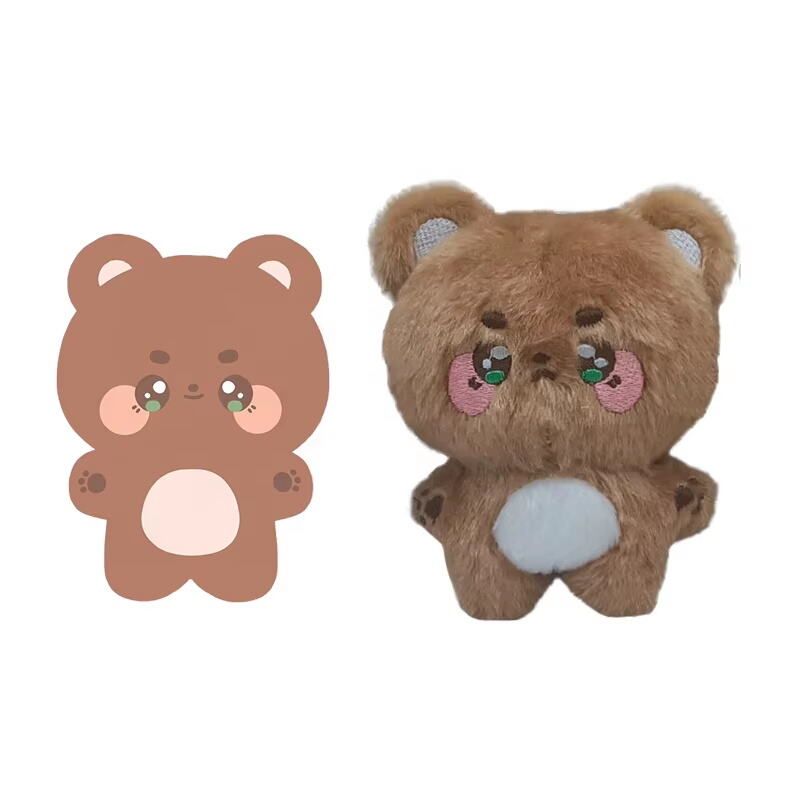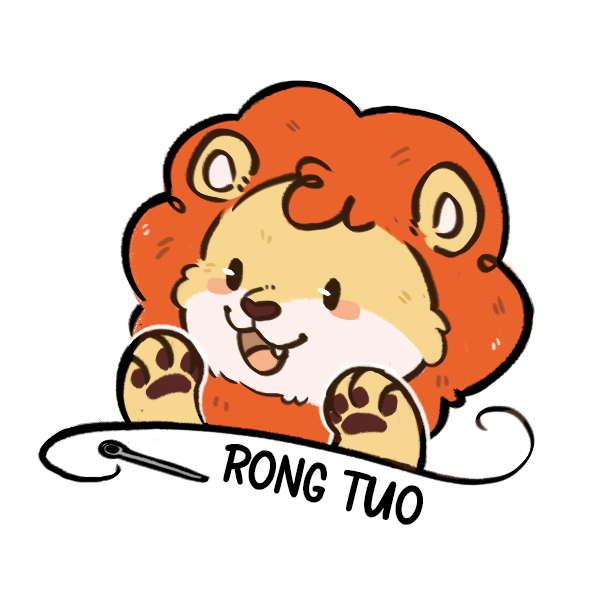Understanding Plush Toy Allergies
Plush toys can harbor allergens that may trigger allergic reactions in sensitive individuals. According to the Asthma and Allergy Foundation of America, nearly 50 million people in the U.S. suffer from allergies, underscoring the relevance of this issue for parents who need to be conscious of the materials used in these toys. Allergic reactions can arise from exposure to dust mites, molds, and pet dander, all of which can be found in plush toys, making it crucial for parents to be aware of potential allergenic hazards.
Hypoallergenic materials play a vital role in the manufacturing of plush toys, as they are specifically designed to minimize allergic reactions. Utilizing these materials prevents the accumulation of common allergens like dust mites, mold, and pet dander, ensuring a safer environment for allergy-prone individuals. These hypoallergenic alternatives are essential to protect children who may otherwise have adverse reactions to standard plush toy materials and help in creating a more comfortable experience for both the child and caregiver.
Educating oneself on how plush toys can affect children with existing allergies is an essential step for parents. Opting for toys made from materials free from harmful substances, such as formaldehyde and phthalates, significantly benefits children with allergies. Such considerations contribute to the overall well-being of allergy-prone children, ensuring that their exposure to potential allergens is minimized. By understanding and selecting the right plush toys, parents can help mitigate the risks associated with allergies.
Identifying Common Allergens
Understanding the common allergens found in plush toys is key to managing allergies effectively. Dust mites, microscopic creatures prevalent in household dust, are one of the main culprits. Research indicates that over 20 million Americans are allergic to dust mites, a fact underscoring the importance of awareness for parents choosing toys. These mites thrive in humid environments and can exacerbate conditions like eczema and asthma, causing symptoms such as itchy eyes and sneezing.
In addition to dust mites, other allergens include mold, animal dander, and specific fabrics. For instance, wool and synthetic fibers are reputed for causing irritation and should be considered carefully. Mold and mildew give off noticeable signs, such as discoloration and odors, which indicate allergen presence. Regularly inspect toys for these indicators to prevent prolonged exposure.
Maintaining a clean environment for plush toys is vital in reducing allergen exposure. Techniques like freezing plush toys overnight or washing them with eucalyptus oil can effectively decrease dust mite numbers. Regular cleaning of the toys and their surroundings, along with ensuring good air circulation, can significantly cut down on allergen build-up, ensuring a safer environment for allergy-prone children.
Choosing Hypoallergenic Plush Toys
Choosing the right plush toy for your child involves considering hypoallergenic options. When purchasing plush toys, it's imperative to look for hypoallergenic labels, which signal compliance with safety standards and a lower likelihood of triggering allergies. This extra step ensures your child's comfort and safety, particularly if they are prone to allergies.
Researching reputable brands that specialize in hypoallergenic Products is also important. Brands that receive certifications from organizations such as the American Allergy Association are usually a safer bet, indicating that the plush toy has undergone thorough testing to mitigate allergen exposure. This not only offers peace of mind but also guarantees a safer playtime experience for your child.
Additionally, pay attention to the materials used in the toys. Opting for natural fibers like cotton, bamboo, and microfiber can be beneficial, as they offer safer alternatives to conventional materials. It’s advisable to consider products that are OEKO-TEX certified, which ensures they are free from harmful chemicals. This certification is an added assurance that the toy is a healthier choice for children with sensitivities.
Evaluating Plush Toys for Cleanliness
Checking for washability is crucial when evaluating plush toys for cleanliness. Many plush toys are magnets for allergens like dust and pet dander, which can accumulate over time. By ensuring that a toy is washable, parents can maintain its hygiene and reduce allergen buildup, which is especially important for children with allergies. Washable toys can be cleaned regularly, and implementing cleaning cycles can help manage and minimize allergic reactions.
Effective cleaning methods include using hot water and a hypoallergenic detergent when washing plush toys. Selecting the right detergent is essential as it should be gentle on fabrics while effectively removing allergens. Additionally, making sure toys dry completely is vital to prevent mold growth. Another helpful tip is vacuuming the plush toys with an upholstery attachment to remove dust and allergens before washing them.
Understanding each toy's care instructions is important for maintaining cleanliness and durability. Some plush toy materials might require special handling, such as avoiding high temperatures or certain cleaning agents. Adhering to these guidelines not only helps in prolonging the toy's lifespan but also reduces allergen accumulation. This careful approach to maintaining plush toys ensures they remain safe and snuggly companions for children.
Testing for Allergy Safety
Testing plush toys for allergy safety is an essential step before gifting them to a child with allergies. Start by examining the materials of the plush toy to ensure they are free from common irritants. Allow the child to interact with the toy to observe any immediate reactions, as children can be sensitive to certain materials present in plush toys.
Monitoring the child's reactions after introducing a new plush toy is crucial. Keeping a diary of any symptoms or allergic reactions can help parents identify which materials are safe and which should be avoided. This ongoing observation ensures the child's environment remains allergy-friendly.
Furthermore, consulting with a pediatric allergist can provide parents with tailored advice on managing any potential allergy triggers. Professional opinions not only offer reassurance but also provide strategies to manage and mitigate plush toy interactions that could cause allergic reactions. These precautions can be pivotal in creating a safe play environment for children with allergies, emphasizing the importance of choosing the right plush toy for a child with allergies.
Top Recommendations for Kids with Allergies
When choosing plush toys for children with allergies, it's essential to consider certified hypoallergenic options that meet established safety standards. These toys are designed with materials that minimize the risk of allergic reactions, ensuring a safer play experience for children and peace of mind for parents. Certified hypoallergenic plush toys undergo rigorous testing to verify that they do not harbor allergens or irritants that could potentially affect sensitive children.
Several reputable brands are recognized for providing allergy-safe plush toys. For instance, Jellycat offers a variety of hypoallergenic plush options, emphasizing soft materials that are less likely to irritate children with sensitivities. Similarly, Bunnies by the Bay is noted for their commitment to using safe materials, making their products a reliable choice for parents. According to available research, both brands have implemented effective measures to reduce the presence of allergens in their toys, catering specifically to the needs of children with allergies.
Parents might also want to explore local shops and marketplaces that focus on eco-friendly and hypoallergenic toys to widen their options. Many of these places provide thorough descriptions of the materials used in their plush toys, allowing parents to make more informed decisions. Furthermore, engaging in online communities and forums dedicated to parents of children with allergies can offer real-world insights and recommendations based on actual experiences, thereby enhancing the decision-making process. Such communities are valuable resources for sharing tips and discovering new allergy-friendly toy options that have proven successful for other families.
FAQ
What are the common allergens found in plush toys?
Common allergens in plush toys include dust mites, mold, animal dander, and certain fabrics like wool and synthetic fibers.
How can I ensure a plush toy is hypoallergenic?
Look for plush toys with hypoallergenic labels and certifications from reputable organizations. Opt for ones made from natural fibers like cotton and bamboo.
Can all plush toys be washed?
Not all plush toys are washable. It's important to check the toy's care instructions to ensure proper cleaning methods are followed to maintain hygiene.
Is consulting a pediatric allergist helpful?
Yes, consulting a pediatric allergist can offer tailored advice on managing potential allergy triggers and ensuring the child's play environment is safe.


